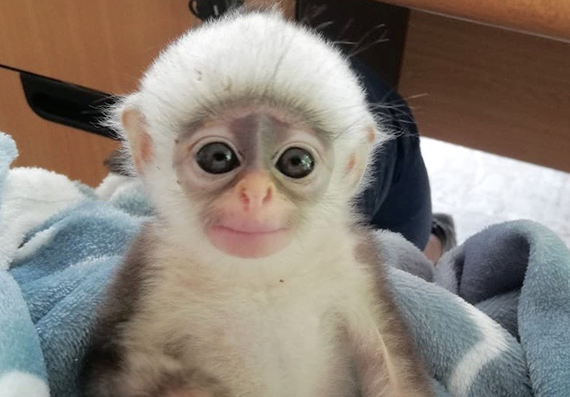
Kekah Bintan monkey, also known as the Bintan Island langur, is a species of primate that is native to Bintan Island in Indonesia. Kekah Bintan monkey is a medium-sized monkey, typically weighing between 5 to 7 kg and measuring up to 65 cm in length. They have long, slender limbs, and a long, bushy tail, which they use to balance while moving through trees.
Kekah Bintan monkeys are herbivorous and mainly feed on leaves, fruits, and flowers. They are active during the day and live in small groups consisting of one dominant male and several females and their offspring. These monkeys are social creatures and often communicate with each other through a variety of vocalizations and body language.
Kekah Bintan monkeys are facing a number of threats to their survival, including habitat loss due to deforestation, illegal hunting and poaching, and the pet trade. The ArkAsia Foundation is committed to protecting and improving the welfare of Kekah Bintan monkeys by providing shelter, rescue, rehabilitation, and sanctuary to primates in need, and promoting awareness and advocacy for their protection.
The Kekah Bintan Monkey, also known as the Bintan long-tailed macaque, is a primate species native to Bintan Island in Indonesia. They are considered an endangered species due to habitat loss and the illegal pet trade. Kekah Bintan Monkeys are highly social animals and live in large groups called troops, which can range from 20 to over 100 individuals. They are known for their long, slender tails and distinctive facial markings, which vary in color from light grey to brown.
These monkeys are omnivores and feed on a variety of foods including fruits, insects, and small animals. While they are adaptable and can survive in different types of habitats, their populations are declining due to deforestation and the fragmentation of their natural habitats.
The ArkAsia Foundation is committed to protecting and improving the welfare of Kekah Bintan Monkeys through specialized care, rehabilitation programs, and advocacy efforts. By working together, we can help to ensure the survival of this unique primate species and protect them for future generations to come.

